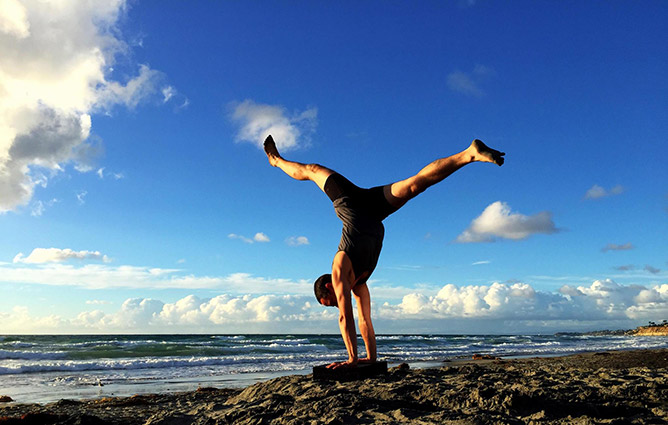Pelvic Stability (or Why You Want a Strong Butt), by Peach Friedman
Gluteal engagement and yoga have had a tumultuous relationship this decade. Like that brief period in the 80’s when we all thought margarine was healthy — until we saw the light (and pure, lustrous goodness) of real butter — yoga teachers have had to retire the misdirected ‘relax your glutes’ cues that were commonly instructed in back bends. Strong gluteal muscles are a lot like real butter: they make everything better.
How can you strengthen your glutes within your asana practice? Watch this short tutorial to work these big hip extensors in Virabhadrasana III.
https://vimeo.com/219788291
The why behind the margarine cue has to do, I believe, with the fact that gluteal muscles will externally rotate the legs at the hip joint, something we generally want to avoid in back bends, especially symmetrical back bends like Urdhva Danurasana. However, the solution isn’t to take these powerhouse muscles out of the equation all together; in fact, it’s impossible to practice Urdhva Danurasana without firing your glutes. This is because in addition to external rotation, your glutes are responsible for hip extension: a key ingredient in back bending.
There’s a really great article that addresses an approach to Urdhva Danurasana by yogi anatomist Ray Long, which you can read here. For today, I’m going to dial back from the back bends, and highlight on how to strengthen the glutes specifically for hip extension (see the video).
Your glutes are the family of mighty movers on the back of your pelvis, and made up of three muscles: gluteus maximus, gluteus medius, and gluteus minimus. I’m going to focus on the glute max.
A primary mover in hip extension, glute max is the largest muscle in your entire body. You want it to be strong. If it’s not, then the smaller, secondary muscles try to do its job, leading to all sorts of imbalances that can ripple throughout your body. In addition to hip extension, your gluteus maximus also play a key role in external rotation and abduction (this is where caution to avoid too much of these actions led to our well-intended, but misleading, margarine cue).
You can practice strengthening glute max in Virabhadrasana III. This is a great pose to also focus on keeping your glutes firing with the action of hip extension, and limit the external rotation. This way, you’re mimicking some of what we want to achieve with back bends. A common misalignment of Virabhadrasana III is to externally rotate the lifted leg. This isn’t necessarily a bad thing, and you could certainly do that intentionally as a variation. But you can get that sort of abducted, rotated leg in Ardha Chandrasana, so, I like to use Vira III more traditionally, and keep the lifted leg from turning out.
Yoga is notorious for streeeeeeetching our hips and hamstrings. All of which is quite productive, if you can’t touch your toes or sit cross-legged on the floor. A lot of humans need that. For those of us who have a fair amount of mobility in the lower half of our bodies, however, we need to prioritize balancing our flexibility with strength. It makes sense that lots of regular yoga practitioners either arrived naturally flexible to their first yoga class, or have developed their flexibility with years of practice.
In addition to supporting your asana practice, strong glute max helps prevent low back pain, and avoid pelvic imbalances including SI Joint Dysfunction. Often, symptoms from weak gluteal muscles don’t show up immediately. The best treatment is prevention. So, here’s to keeping your butt toned, and your pelvis in one piece!
Thanks to Noah Maze, Paula Gelbhart, and Rocky Heron for teaching + inspiring me.

Thank you Peach. Great reminders and demo. Easy to see and understand. Great reference to Ray Long as well.
namaste.